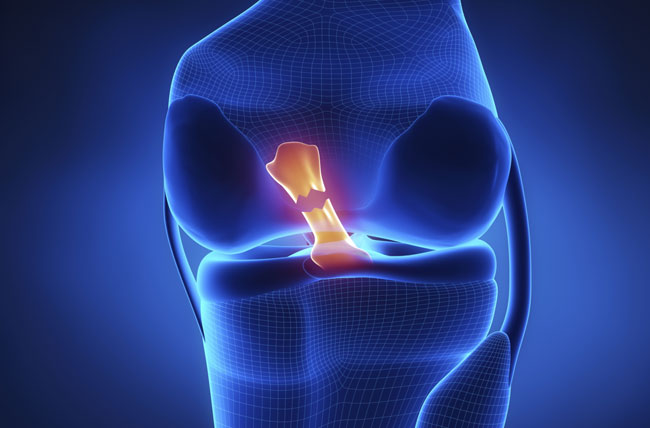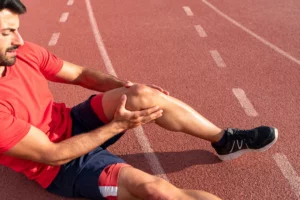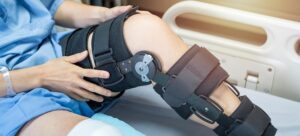Maintaining optimal knee health is essential for a life of mobility and comfort. The choices we make in our daily lives significantly influence the well-being of our knees. This article delves into the habits that can either fortify or compromise the health of this vital joint. By adopting positive practices and steering clear of detrimental behaviors, you can actively contribute to stronger, more resilient knees and reduce the risk of chronic pain or injury.
1. Maintaining a Healthy Weight: The Cornerstone of Knee Health
One of the fundamental factors influencing knee health is weight management. Excess weight places undue stress on the knees, increasing the risk of wear and tear. Adopting a well-balanced diet and engaging in regular exercise are crucial steps toward achieving and maintaining a healthy weight, ultimately promoting the longevity of your knee joints.
2. Staying Active: Exercise for Strong and Flexible Knees
Regular physical activity is a cornerstone of knee health. Exercise strengthens the muscles surrounding the knee, providing crucial support. Incorporate knee-friendly exercises such as swimming, cycling, and strength training to enhance joint flexibility and stability. Aim for a well-rounded fitness routine that caters to your individual needs and preferences.
3. Proper Posture: A Pillar of Knee Well-being
The way we carry ourselves directly impacts our knee health. Maintaining proper posture is essential to prevent unnecessary strain on the joints. Whether sitting, standing, or exercising, be mindful of your alignment. Ergonomic adjustments in daily activities contribute to the longevity of your knees and overall musculoskeletal health.
4. Footwear Matters: Choosing Shoes for Knee Comfort
The shoes we wear play a pivotal role in knee health. Ill-fitting or unsupportive footwear can lead to misalignment and increased stress on the knees. Invest in shoes that provide adequate support for your arches and suit the activity at hand. A mindful choice in footwear can contribute significantly to the prevention of knee-related issues.
5. Balanced Nutrition: Nourishing Your Joints from Within
Nutrition is a powerful ally in the quest for healthy knees. Include foods rich in omega-3 fatty acids, antioxidants, and vitamins such as C and D in your diet. These nutrients promote joint health and help mitigate inflammation. A well-nourished body is better equipped to support the demands placed on the knees.
6. Mindful Movement: Techniques for Joint Preservation
Mindful movement practices, such as yoga and tai chi, are excellent tools for promoting knee health. These activities enhance flexibility, balance, and joint awareness. Incorporate gentle stretches and movements into your routine to preserve the integrity of your knees and improve overall joint function.
7. Hydration: The Overlooked Element in Joint Health
Adequate hydration is often overlooked in the context of joint health. Water lubricates joints, facilitating smoother movement and preventing stiffness. Ensure you stay hydrated throughout the day, especially during physical activities. Hydration is a simple yet powerful way to support the health of your knees.
8. Avoiding Overexertion: Preventing Knee Strain
While exercise is vital, overexertion can lead to knee strain and injury. Pay attention to your body’s signals and incorporate rest days into your fitness routine. Cross-train to avoid overloading specific muscle groups. Balancing intensity with adequate recovery is key to preventing unnecessary strain on the knees.
9. Quitting Smoking: A Positive Impact on Joint Health
Smoking has been linked to an increased risk of joint problems, including those affecting the knees. Quitting smoking is a positive step toward improving overall joint health. Seek support and resources to kick the habit and pave the way for healthier, pain-free knees.
10. Regular Check-ups: Proactive Measures for Knee Health
Regular medical check-ups are proactive measures in ensuring the ongoing health of your knees. These check-ups can identify potential issues early on, allowing for timely intervention. If you experience persistent knee discomfort or have a history of joint problems, consult with a healthcare professional for personalized guidance.
11. Get a support knee braces
At Daphco Medical Equipment, we offer various types of knee brace which can provide support and relief. Either it’s ACL tear, knee pain, osteoarthritis and etc, we got you covered. You can get them at the most competitive price in our product page. If you’re a solely Medicare covered, you can fill out this contact form and a customer support representative will give information to have your braces covered with Medicare.
In conclusion, adopting a knee-friendly lifestyle involves a holistic approach to health. By incorporating these habits into your daily routine and steering clear of detrimental behaviors, you can actively contribute to the strength and resilience of your knees. Remember, the small choices we make daily can have a profound impact on our long-term joint health.



 888-616-4156
888-616-4156 

























